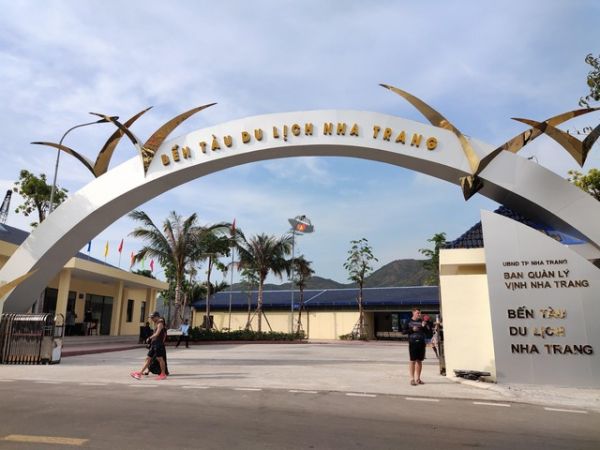HOA LO PRISON HANOI

Hoa Lo Prison Hanoi, one of the most horrific jails with extraordinarily harsh punishment, is a historical site that has witnessed Vietnamese revolutionaries' unwavering dedication and sacrifice for the country. This iconic landmark is also frequently recommended by Nha Trang Day Tours as part of their curated experiences for travelers looking to explore Vietnam’s rich and resilient history.
Hoa Lo Prison Hanoi Information:
- Address: 1 Hoa Lo Street, Tran Hung Dao Ward, Hoan Kiem District, Hanoi City
- The opening hours: From 8:00 AM - 5:00 PM.
- Entrance fee: 50.000 VND
Visiting Hoa Lo Prison should be one of the top activities on your bucket list while in Hanoi, in addition to experiencing great Vietnamese traditional cuisine. As part of many Hanoi shore tours, coming to this historical relic will allow you to obtain a better understanding of the lives of Vietnamese rebels during the First Indochina War. This essay will supply you with useful facts about this important Hanoi historical landmark.
Hoa Lo Prison Hanoi has a superb position in the middle of Hanoi, approximately a 15-minute walk from Hoan Kiem Lake. Tourists may easily visit this site from anywhere in the city. Popular modes of mobility include public buses, motorcycles, taxis, and cars.
If you prefer to take the bus, the numbers 2, 9, 40, and 49 all stop near the jail. If you have a car, you may park at the Hoa Lo Prison entrance.
The history of Hoa Lo Prison Hanoi:
When Vietnam was still a part of French Indochina, the French began building Hoa Lo Prison in 1896 and completed it by 1901. The jail was formerly called Maison Centrale, a typical euphemism for French prisons. The jail was used to house political prisoners striving for independence throughout the conflict. By 1954, it had about 2,000 detainees, who were chained to walls by the dozen and lived in deplorable circumstances. Several Vietnamese rebels were executed using the barbaric guillotine, which the French had employed throughout the region.
After the French were forced out of Hanoi in 1954, the jail was turned into a Vietnamese institution. From 1964 until 1973, numerous American pilots captured during the Second Indochina War were detained here, including Senator John McCain and Douglas Peterson, the first ambassador to Vietnam after the war. Hoa Lo's detainees were progressively liberated when the conflict came to a conclusion.
For the following two decades, the jail housed political militants. It was shuttered and partly dismantled in 1990 to make space for high-rise development in Hanoi's expanding city.

This thought-provoking sight is all that remains of the former Hoa Lo Prison, which was ironically called the 'Hanoi Hilton' by US POWs during the American War. The majority of the displays cover the prison's use up until the mid-1950s, with a focus on Vietnam's battle for independence from France. A terrible relic is the foreboding French guillotine, which was used to behead Vietnamese insurgents. There are also displays dedicated to the American pilots who were imprisoned at Hoa Lo during the American War.
These pilots include Pete Peterson, the first US ambassador to a united Vietnam in 1995, and Senator John McCain, the Republican presidential contender in 2008. McCain's flying outfit is on display, along with an image of Hanoi villagers rescuing him from Truc Bach Lake after he was shot down in 1967.
The French established the enormous jail complex in 1896. Originally meant to keep around 450 offenders, records show that during the 1930s, there were almost 2000 prisoners. Hoa Lo was never a particularly effective jail, and hundreds of inmates escaped throughout the years, many of them through sewage grates.
Polyglots may remark that the French signs are less pronounced than their English counterparts.
'Hoa Lo' translates to ' stove' or 'furnace'. The majority of the jail was dismantled in the 1990s, and high-rises (including the Somerset Grand Hanoi) and other buildings were erected on its site, except a piece in a corner of the property that houses the museum.

The unique building of Hoa Lo Prison Hanoi:
Hoa Lo Prison, formerly known as Indochina's impregnable prison, was encircled by walls 4 meters high and 0.5 meters thick, studded with shattered glass and barbed wires operated by high-voltage electricity. There are four watchtowers located at each corner of the jail, allowing the wardens to oversee every single activity of the detainees.
The inside of Hoa Lo Prison, which covered 12,000 square meters, was divided into many sectors, including a guard house, a medical house, an iron and textile production building, and seven houses for accused inmates. There was also a dreadful area called the Cachot, which was used to detain those with oppositional behaviors or violent offenders. The Cachot was considered the worst of hell since it lacked light, air, and space. It was a nightmare for all Vietnamese detainees at the time.
Visitors at Hoa Lo Prison will be able to observe displays depicting the prison's history throughout two different periods. The first phase begins with the construction of the jail by French colonialists in 1896 and ends with the liberation of Hanoi in October 1954. The second era, from 1964 until 1973, saw the Vietnamese government employ a part of the facility to hold American pilots.
Inside the jail, you will see an intimidating French guillotine, terrible iron shackles, horrific torture equipment, and sculptures of victims wearing leg chains. The guards here abused and battered the Vietnamese inmates regularly. Tortures included electric shock, upside-down hanging, and poor rice feeding. This jail will broaden your perspective, knowledge, and admiration for the revolutionary warriors' spirit, as well as the Vietnamese people's humanitarian treatment of American captives throughout the war.

Tips for Visiting Hoa Lo Prison Hanoi:
- Do not bring firearms, explosives, or flammable materials.
- Don't smoke.
- Please do not touch or move the exhibits.
- Burn incense and lay flowers exclusively at the memorial area.
Hoa Lo Prison Hanoi is a famous tourist site for individuals interested in war history. Official records state that detainees were in the hundreds, although it was not uncommon for up to 2,000 people to be jammed into a facility designed for 600. Around 200-300 detainees were captured by American pilots and transported to Maison Centrale for questioning and torture; it was the American captives who gave the institution the sardonic nickname 'Hanoi Hilton'.
Despite the visible exhibition of shackles on the walls, Hoa Lo Prison now depicts a different aspect of the horrific stories shared by previous detainees. Much of the focus is on Vietnamese revolutionaries, some of whom were executed at the jail. The American POWs have extensively chronicled their personal experiences, although little of it is currently available at Maison Centrale.
Maison Centrale is accessible by a gate on Hoa Lo Street with the sign Maison Centrale at the entrance. A cab is the simplest method to travel to Hoa Lo jail, which is located on the right corner of Hai Ba Trung Street on the outskirts of the French Quarter. This visit may easily be combined with a tour of the neighboring Hoan Kiem Lake.

Hotline/ WhatsApp: +847-6666-0606
Email: info@friendlytravel.vn













